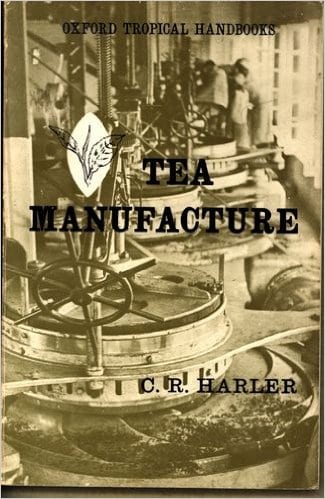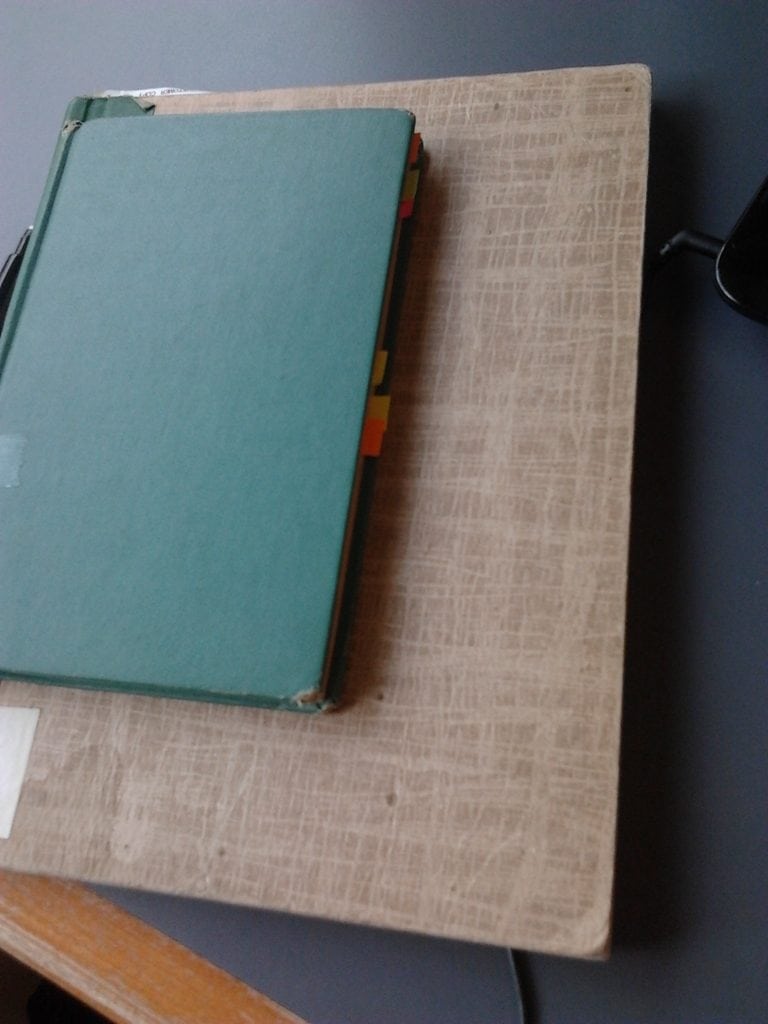 Whereas I called Tea Processing the spiritual sequel to Harler’s Tea Growing (as it draws from many different resources, but does take largely after Harler’s handbooks), this is the actual sequel (technically in terms of publication dates, prequel). It picks up where Tea Growing leaves us with the proper plucking technique and storage of fresh leaf matter.
Whereas I called Tea Processing the spiritual sequel to Harler’s Tea Growing (as it draws from many different resources, but does take largely after Harler’s handbooks), this is the actual sequel (technically in terms of publication dates, prequel). It picks up where Tea Growing leaves us with the proper plucking technique and storage of fresh leaf matter.
Harler has actually put out a number of books on tea, published in around the 1960s; this would make them a bit outdated, but the information given is (at least in Tea Growing and Tea Manufacture) still fairly relevant; Tocklai’s public site shows that a lot of the processes of manufacture are still in effect (baring, I suppose, legg-cut which has disappeared into obsoletion). Paraphrasing Harler, there’s not a lot to be innovated in terms of withering, fermentation and firing, and the focus should instead be placed on streamlining a continuous tea process.
Harler actually comes up a LOT during my Google Quests for Information. He has a third book, which is by far the easiest to find (and the only one readily available as a pdf). So that one’s also on my ‘to read’ list, to complete what I’m calling the Harler Trio. But on top of that he’s written articles for the Tea and Coffee Trade Journal (among others), and on almost every subject I find someone writing a review of a review he did on something. Unfortunately finding other scholar’s reviews of his work is MUCH easier than finding copies of his actual work. Most of the early tea journals he wrote for either did not last into the digital age, or have not made any attempts to preserve their earlier works digitally. Not even on archive.org. It comes down to finding universities and large public libraries that still carry journals from the 30s through 70s, and unfortunately for me, although Food and Agriculture is abundant, Tea and Coffee Trade is not.
Tea Manufacture is a nice blend of History and Technology, and like Tea Growing, is designed to be a short summary or introduction, as well as an easily-referenceable handbook on tea manufacture and processing techniques. Harler spends a lot of time on the history of development behind the rise of orthodox and non-orthodox techniques, mainly legg-cut, rotorvane, and CTC. He traces the mindsets behind each system, the people involved, and details the precursors to the “modern” (as of the 1960s) incarnations.
He also covers four main phases of development in the tea industry, linked to the evolution of preparation and manufacture. The first phase follows the hand processing done in early China with var. sinensis, with export peaking in 1886. The second begins in 1839 in Assam with the rise of the var. assamica bush, with growers simplifying earlier Chinese hand preparation. The third process begins in 1880 with the rise of mechanical rollers and dryers, emphasis on “manufacture” rather than “preparation”; this leads to ‘orthodox manufacture’. The last phase began in 1925, with the rise of tobacco cutters, followed by CTC and rotorvane becoming widely adopted. He does propose a possible fifth phase with the rise of instant tea, but we all know how well that worked out.
Harler occasionally reference other works, and includes citations for “Further Reading” at the end of a few chapters, but the majority is unique work (my short research jaunt on Harler showed that he was a well-respected doctor of science once attached to the Tocklai Research Station); it really is a solid reference, showing relationships between specific characteristics like briskness and colour versus the different parameters of manufacture (such as withering time or firing temperatures), and does so simply; it’s straight-forward and includes clear figures and tables to further illustrate the relationships.
Information like withering times, percentages, temperatures, depth of spread, firing temperatures, times, exhaust temperature and so on are still useful to reference today even as technology marches on with the development of new tea distortion techniques and continuous rollers (Boruah, Tocklai, Ceylon and others). However, because I read Werkhoven’s Tea Processing first, Harler’s work doesn’t immediately hit me as being as in-depth.
The editions I read for Harler and Werkhoven’s works were published in 1963 and 1974 respectively, although I believe there have been a number of editions/revisions of both (the library I picked up Harler’s from had a reference-only copy of Werkhoven’s work that appeared to be a different edition, although it slipped my mind to check the publication date at the time). I’m glad I was able to find them both; Harler’s works make a solid series of books (I might be jumping the gun since I haven’t read the last of the trio yet), and if they were a little easier to find, I wouldn’t mind owning them just for reference. A number of the more current and popular general ‘tea’ handbooks on the market do offer sections on tea manufacture (and a few of them reference Harler’s works), but of the ones I’ve looked at, most don’t really come close to the dedicated works.
When it comes down to comparing Harler and Werkhoven’s works, however, I’d say pick up Werkhoven’s if you can find it. It draws very deeply from Harler’s (the deja vu is strong), but also references a hefty list of other works, so in the end it’s a lot more well-rounded and lengthy. I also liked the organization of Werkhoven’s Table of Contents better; Harler’s includes only the titles of each section (with a short summary), while Werkhoven’s includes the subsections, making it a lot easier to flip through it quickly and find the information you want. That said, Werkhoven’s TOC is also eight pages long, so maybe it’s a little TOO specific. I’ve included both TOCs for those interested in comparing the two, or thinking of going on ebay hunts for the works:
The TOC of Harler’s Tea Manufacture is a scan of my own personal making, and is included under Fair Use, which allows the copying of small sections of books, including the Table of Contents, for use in reviews or commentaries.
- Availability: Slightly more than Werkhoven’s, I’d say, but not by much. At least in my area. Worldcat
- OpenLibrary does not have a copy
- Amazon US has one copy
- Table of Contents





08/06/2016 at 12:43 PM
I really like your researches on “old” tea books. I am always learning something.
09/06/2016 at 12:58 AM
Thanks, they’re fun to read. I hope to introduce people to a wider range of tea-books outside the few main tea-guides currently in bookstores.